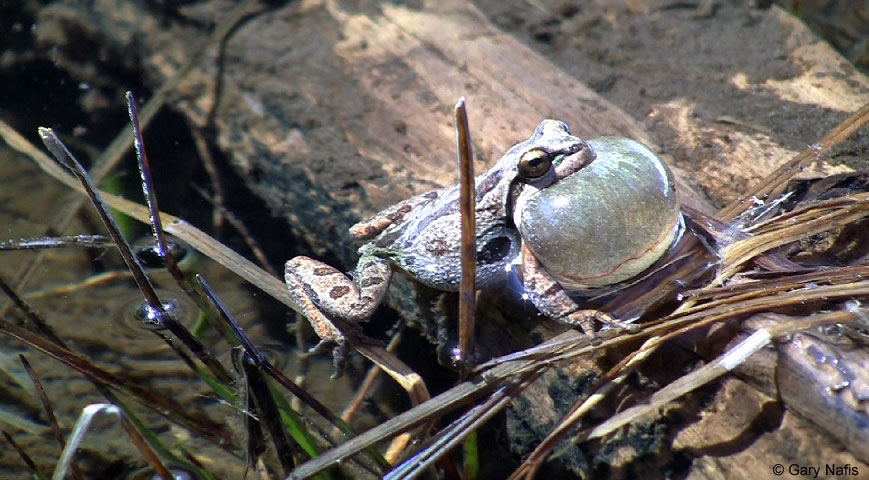Interactions
Pacific tree frogs have many interactions with other species that help them survive. First off, like many frogs, Pacific tree frogs use their tongue to catch prey. Their prey consists of insects and arthropods, including beetles, flies and spiders. The frogs stay very quiet while looking for prey and use camouflage to avoid detection. When they are very close to being in reaching distance of the prey, they wiggle their toes, which attract the prey closer to them. The frogs then use their long, sticky tongue to bring the prey to their mouth (California Herps 2013).
While camouflage is very useful in staying hidden from predators, Pacific tree frogs also use their cryptic coloration to hide from predators. Blending into the environment is their main defense against predation. When they match their surroundings, they remain motionless until the threat has passed. The ability of some frogs to change color is key to survival, especially in environments that have seasonal changes (Wente and Phillips 2005). To learn more about the Pacific tree frog’s ability to change color, check out the Adaptations page. Other defense mechanisms for avoiding predation include jumping into the water, which will work if the predator cannot swim, or hiding in tall grass. Frogs will use these defenses when they do not blend into the environment or their cryptic coloration is not enough to avoid being eaten.
Garter snakes are the main predators of Pacific tree frogs.
Other predators include raccoons, herons, opossums, other species of
frogs, small mammals, birds, reptiles, and fish (ADW 2013). The main predators of Pacific tree frog tadpoles are
mosquitofish, but also include
bluegill sunfish, predaceous
diving
beetle larvae, aquatic invertebrates and other fish (Benard 2006).

The call of the Pacific tree frog has a few different functions in daily life. First off, calls are used to attract potential mates. They also produce a different warning call to tell other rival males to get out of their territory (ADW 2013). The frogs may warn other males to get away from their current or potential mate as well. While males are calling, they will stop if an intruder is present. Their silence helps them to hide and prevent getting eaten. However, if they don’t see the intruder move anymore they will start calling again.
Pacific tree frogs are known to have one very detrimental parasite—Ribeiroia ondatrae. These parasitic flat worms begin their life in aquatic snails. They are then released for the sole purpose of melting through the skin of tadpoles. The parasite affects limb growth in the tadpoles. The tadpoles may end up with a missing limb, an abnormal limb, or one or more extra limbs. The parasite may kill the frog, but if not, the limb deformities make it much harder for the frog to escape predation. Although there has not been extensive research done on the subject, evidence shows that the increase in Ribeiroia ondatrae in frog habitats may be caused by humans. Human waste and fertilizer added to frog habitats increases the amount of nitrogen and phosphorus in the environment. The added nutrients cause algal blooms, which allow for increases in snail populations, the hosts for the parasite (The Johnson Lab 2013).
While humans most likely have some negative effects on Pacific tree frogs, there are no known harmful effects of frogs on humans. Pacific tree frogs benefit their environment and humans by eating insects. They can help to control pest species in their habitat preying on them. Frogs also benefit other species by being their primary prey.
Now that you’ve learned about Pacific tree frog interactions, check out some interesting Facts about them.
